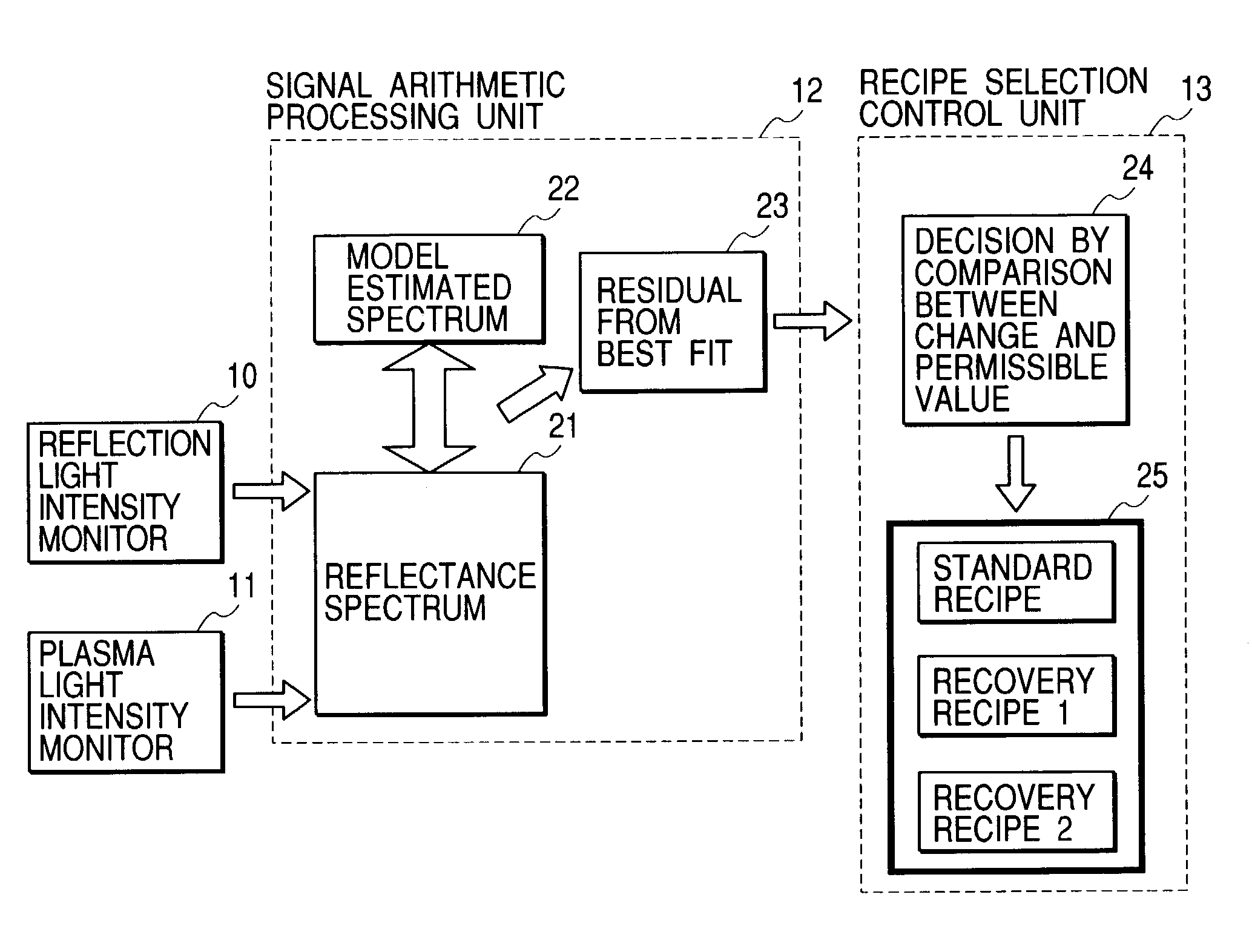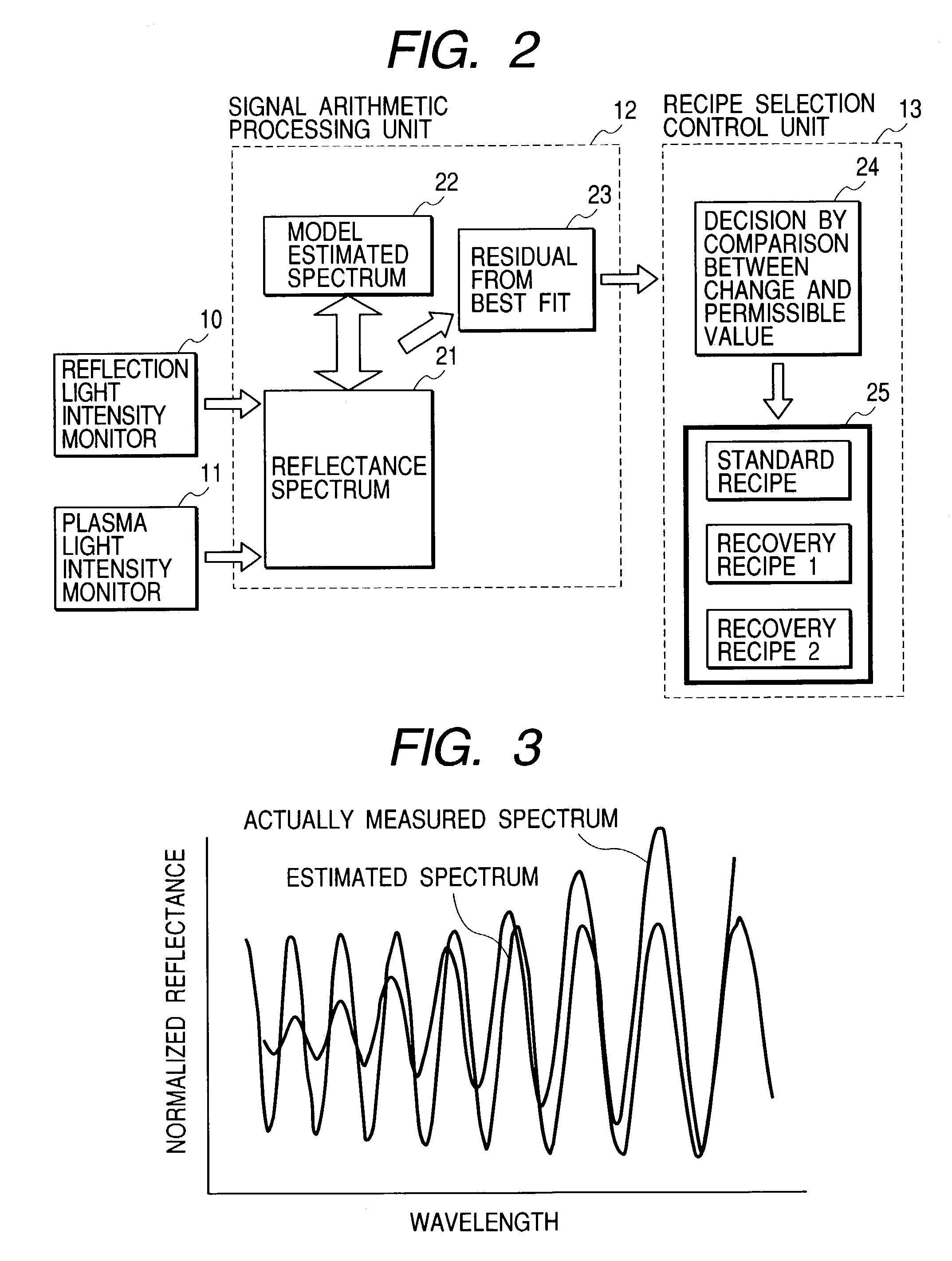Method of dry etching a sample and dry etching system
a sample and dry etching technology, applied in the field of plasma processing samples, can solve the problems of embedding failure, inability to obtain the benefit of increasing the speed of a transistor obtained by reducing the design rule, and the process conditions required for a normal treatment are becoming more strict, so as to reduce the dependence on the ion incident angle of the etching rate which is the cause of surface roughness, and improve the treatment
- Summary
- Abstract
- Description
- Claims
- Application Information
AI Technical Summary
Benefits of technology
Problems solved by technology
Method used
Image
Examples
example 1
[0075]First, as an example of the present invention, 50 wafers having the same mask pattern and an organic porous insulating film having a dielectric constant of 2.2 were etched using the UHF-ECR type vacuum treatment system shown in FIG. 1. When the treated wafers were inspected, first to 27-th wafers passed a residue failure test but 28-th and subsequent wafers did not pass the test.
[0076]Data continuously sampled and recorded by the monitors 10 and 11 were processed and analyzed by the signal arithmetic processing unit 12. As a result of analysis, the fitting coefficient began to change from the estimated value of a film thickness model in the latter half stage of the etching step of the 25-th wafer as shown in FIG. 8, the change became larger gradually in the subsequent wafers and the treatment was repeated while the width of the change was saturated.
example 2
[0077]As another example of the present invention, when a change from the fitting value was detected, control was carried out using the recovery recipe 1 in which the flow rate of an etching gas was increased by a predetermined amount in place of the standard recipe to process 50 samples of the same type continuously as described above. As a result, as shown in FIG. 9, the recovery control did not work on first to 24-th wafers. However, recovery control worked from the 25-th wafer that etching was carried out with a recipe in which the flow rate of the gas was increased. After the recovery control worked on the 25-th and subsequent wafers, the fitting coefficient D was gradually improved and returned to a value smaller than the permissible value DL before the start of etching at the end of etching.
[0078]When the residue failure test was made on the 50 wafers which were continuously treated, all the wafers passed the test that the amount of the residue was below the specified value D...
example 3
[0079]As still another example of the present invention, 50 samples having a different mask pattern as the above samples were etched with the recovery recipe 1 by the control method of the present invention. In this case, as shown in FIG. 10, use of the recovery recipe started from the 35-th wafer to the final 50-th wafer. When the existence of the residue and size were inspected for the 50 treated wafers, all the wafers came up to the standard and were accepted.
[0080]Thereafter, the recovery recipe 2 in which UHF power as plasma generation power was increased from that of the standard recipe was used as the recovery recipe. Using this recovery recipe 2 and the control method of the present invention, 50 samples were continuously treated. In this case, as shown in FIG. 10, control worked on 12-th, 24-th, 36-th and 48-th samples periodically. Similarly, when the existence of the residue and size were inspected for the 50 samples, they all came up to the standard. The reason why the c...
PUM
 Login to View More
Login to View More Abstract
Description
Claims
Application Information
 Login to View More
Login to View More - R&D
- Intellectual Property
- Life Sciences
- Materials
- Tech Scout
- Unparalleled Data Quality
- Higher Quality Content
- 60% Fewer Hallucinations
Browse by: Latest US Patents, China's latest patents, Technical Efficacy Thesaurus, Application Domain, Technology Topic, Popular Technical Reports.
© 2025 PatSnap. All rights reserved.Legal|Privacy policy|Modern Slavery Act Transparency Statement|Sitemap|About US| Contact US: help@patsnap.com



